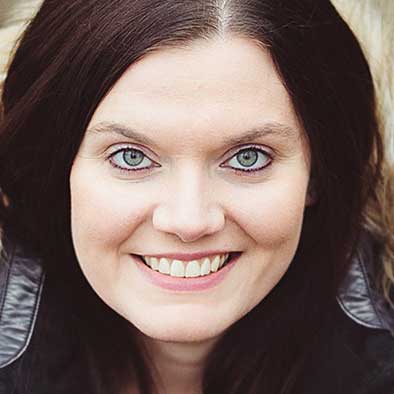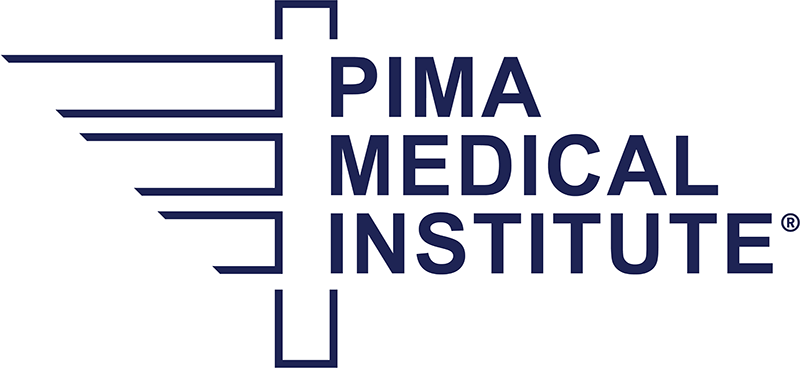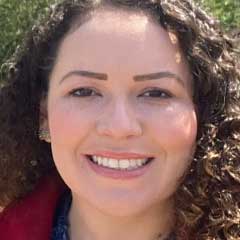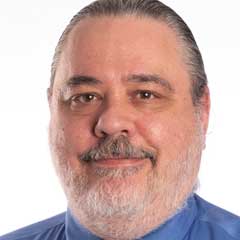Day 1 — Saturday, Dec. 6
All times are Mountain Standard Time.
Display Preferences
Hide/Show
8:00 a.m.–5:00 p.m. | Room 231 AB | General
Sputum Bowl Prelims
Show description
Stop by and watch our Sputum Bowl teams from around the country compete for an opportunity to go head to head in the Finals on Monday night.
8:30 a.m.–8:50 a.m. | North Ballroom | General
Presidents Welcome Address
Dana Evans, MHA, RRT, RRT-NPS, FACHE, FAARC, FNAP
Show description

AARC President Dana Evans will kick off Congress 2025 with a welcome address to attendees. She will discuss Congress highlights and recent impacts the AARC has had on the profession.
8:50 a.m.– 9:40 a.m. | North Ballroom | General
Opening Keynote
Humor and Humanity in Medicine
Dr. Glaucomflecken, MD
Show description

To his millions of online followers, Dr. William Flanary is known for his alter ego Dr. Glaucomflecken. As a practicing physician and survivor of cancer and sudden cardiac arrest, he understands what it means to be a clinician and a patient in the US healthcare system. His comedy incorporates satire surrounding the pervasive interpersonal conflicts in the medical system. Using humor, he advocates for humanity in healthcare for clinicians and their patients. With this keynote, you will definitely laugh, you might cry, all the while shaking your head at the problems facing the US healthcare system. After this presentation you’ll understand that together, good people can do great things.
10:00 a.m. | North Hall C | General
Expo Hall Opening
Show description
The Expo Hall will be open from 10:00 a.m.–4:00 p.m.
11:00 a.m.–12:30 p.m. | Room 227 | General
Student Speed Networking
Amanda Nickel, MSc, RRT-NPS, RRT-ACCS
Show description

Students are invited to start out this year’s Congress with an engaging, fast-paced networking experience. Participants in this kickoff networking session will meet influential individuals from the respiratory care community who may have a long-lasting impact on their career. Limited seating is available. First come, first served. Late arrivals will not be granted entry. Student attendees only.
Sponsored by
12:40 p.m.–2:00 p.m. | Room 227 | General
PACT Meeting
Show description
Stop by to see your colleagues and get an update on the end of the 119th Congress and what to expect in 2026. We will also discuss next steps and progress for the Respiratory Care Interstate Compact.
12:00 p.m.–1:55 p.m. | Room 121 | Clinical Practice
Open Forum #1 — Pulmonary Disease
Show description
Researchers present the results of their work. Authors briefly present their findings and engage in an open discussion with the attendees.
Supported by an unrestricted educational grant from
12:00 p.m.–1:55 p.m. | Room 122 | Clinical Practice
Open Forum Walk Rounds #1
Show description
Researchers present the results of their work. Authors briefly present their findings and engage in an open discussion with the attendees.
Supported by an unrestricted educational grant from
12:40 p.m.–1:15 p.m. | Room 224 | Education
AI and UDL: A New Era of Learning
Lauren Driscoll, MHPE, RRT, RRT-ACCS, RRT-NPS
Show description

Discover how integrating Artificial Intelligence (AI) with Universal Design for Learning (UDL) is transforming respiratory care education and the student experience. This lecture explores the benefits and challenges of AI with UDL in creating inclusive, effective learning environments. Gain actionable strategies to enhance student engagement, accessibility, and outcomes in your classroom.
12:40 p.m.–1:15 p.m. | Room 222 | Neonatal/Pediatric
A New Era of Surfactant Administration in Premature Neonates
Heidi Herrick, MD, MSCE
Show description

Exogenous surfactant therapy has been standard practice in neonatal care for decades. In more recent years, methods to administer surfactants in less invasive ways have been developed with favorable outcomes. This lecture will discuss the various methods for surfactant administration, data to support best practices, and future opportunities for research for a vulnerable patient population.
12:40 p.m.–1:15 p.m. | Room 229 | Leadership & Management
Leadership’s Role in Improving the Care Continuum
Carolyn LaVita, RRT, RRT-ACCS, RRT-NPS
Show description

As with any business model, positive patient experience keeps patients loyal to our healthcare institutions. A well-designed approach to care contributes to that positive patient experience. Leaders create a culture that influences well-coordinated care. This session will detail strategies to create a culture that improves and enhances the continuum of care.
12:40 p.m.–1:15 p.m. | Room 226 | Post Acute Care
COPD Update: Evidence Based Diagnosis and Management
David Mannino, MD
Show description

Over the last several years, many strides have become available for a patient with COPD. These range from the use of pulmonary rehabilitation, medical and surgical therapies, and telehealth. This session will discuss the various types of newer technologies available and how the respiratory therapist can implement these in their practice.
12:40 p.m.–4:15 p.m.
Symposium
New Horizons
12:40 p.m.–1:15 p.m. | Room 221 | Adult Acute Care
An Overview of EIT Principles
Thomas Piraino, RRT, FCSRT, FAARC
Show description

Electrical Impedance Tomography (EIT) is a new, non-invasive method for determining the distribution of ventilation and perfusion in a wide variety of patients. EIT offers an opportunity to look at regional changes in lung volumes as opposed to monitoring global airway pressures and volumes. Understanding the principle of operation is essential for interpretation.
1:25 p.m.–2:00 p.m. | Room 221 | Adult Acute Care
The Role of EIT in Setting PEEP
Glasiele Alcala, PT, RRT, PhD
Show description

Traditional setting of PEEP relies on global measures of airway pressures and hemodynamic response to choose optimum settings. Electrical Impedance Tomography (EIT) allows the determination of PEEP by balancing areas of overdistension with areas of recruitment and collapse.
2:10 p.m.–2:45 p.m. | Room 221 | Adult Acute Care
Assessing Recruitment Potential with EIT
Lorenzo Berra, MD
Show description

Setting PEEP requires assessment of the recruitability of the lung. This can be accomplished using CT scan which includes risks of transport and is a snapshot or CXR. EIT offers an opportunity to monitor regional recruitment and balance overdistension with recruitment.
2:55 p.m. 3:30 p.m. | Room 221 | Adult Acute Care
EIT Monitoring of Prone Positioning
Bhushan Katira, MD, PhD
Show description

Prone positioning has been shown to improve outcomes in moderate to severe ARDS. The primary mechanism is improved distribution of ventilation. However, not all patients respond to prone positioning and monitoring response is important. Importantly, some patients do not manifest improvements in ARDS but do demonstrate improved distribution of ventilation and perhaps a reduced risk of ventilator induced lung injury.
3:40 p.m.–4:15 p.m. | Room 221 | Neonatal/Pediatric
EIT Applications in Neonates and Pediatrics
Carolyn LaVita, RRT, RRT-ACCS, RRT-NPS
Show description

Monitoring ventilation in neonates and pediatrics is complicated by patient size and exposure to radiation. The use of EIT in pediatrics is attractive for the non-invasive nature and insight into lung physiology. Applications of EIT in choosing ventilator settings will be described.
1:25 p.m.–2:00 p.m. | Room 226 | Diagnostics/PFT
Oscillometry: FOT & IOS is there a difference?
Kenneth Harker, RRT, RPFT
Show description

This presentation will review oscillometry and how it’s performed. It will review the potential uses and value it brings while also answering the question of the difference in FOT and IOS.
1:25 p.m.–2:00 p.m. | Room 229 | Leadership & Management
Panel: Building Collaborative Teams in the ICU: A Joint AARC/SCCM
Lauren Sorce, PhD, RN, CPNP-AC/PC, FAAN, FCCM
Eric Kriner, RRT, FAARC
Michelle Rausen, MS, RRT, RRT-NPS, RRT-ACCS
Jose Pascual
Show description




Collaborative, multidisciplinary care teams are crucial to delivering high-quality, patient-centered care in the ICU. This session, presented by AARC and the Society of Critical Care Medicine (SCCM), will focus on the significance of team collaboration within the ICU setting and the essential role it plays in improving patient outcomes. The panel will delve into practical strategies for building and maintaining effective ICU teams, emphasizing communication, shared decision-making, and role clarity across disciplines.
1:25 p.m.–2:45 p.m.
Symposium
Elevating Our Profession Through Early Engagement: Making the Pieces Fit
1:25 p.m.–2:00 p.m. | Room 224 | Education
Understanding Pieces to the Puzzle in Our Partnerships
Teri Miller, MEd, RRT, CPFT, FAARC
Alysia Osorio, BSRC, RRT, RRT-NPS
Show description


The AARC has made a long-term investment in developing strategic partnerships with groups such as HOSA, National Consortium for Health Science Education (NCHSE), American School Counselor Association (ASCA), and Area Health Education Centers (AHEC) and seeks to expand in other areas such as Skills USA and Project Lead the Way to address workforce recovery. This presentation will discuss organizational structures and opportunities for these groups, outline resources developed for use in engagement, and profile early engagement initiatives.
2:10 p.m.– 2:45 p.m. | Room 224 | Education
Aligning Our Pieces for Engagement
Meliza Walsh, RRT, RRT-NPS, AE-C
Alysia Osorio, BSRC, RRT, RRT-NPS
Diane Oldfather, MHEd, RRT, FAARC
Show description



A strategic approach to increasing middle school and high school students’ awareness of respiratory care as a profession through authentic and long-term commitment is essential. This presentation will discuss the value of creating opportunities for middle school and high school students to experience the benefits of joining the respiratory care profession through the engagement of Practicing Respiratory Therapist (RT) and RT student-led events in addition to HOSA event participation through engagement in our state affiliates.
1:25 p.m.–2:00 p.m. | Room 222 | Neonatal/Pediatric
Management of Critical Asthma
Alexandre Rotta, MD, FCCM, FAARC
Show description

Critical asthma remains one of the most challenging clinical entities in pediatric emergency departments and intensive care units. Despite advances in the management of chronic asthma, life-threatening exacerbations remain common. This session will review management strategies to avoid intubation of children and adolescents who present with critical asthma. Consideration will be given to the use of heliox, inhaled anesthetics, and noninvasive ventilation. For those who require intubation, strategies to optimize outcomes will be discussed.
2:10 p.m.–2:45 p.m. | Room 226 | Diagnostics/PFT
Lung Health Checks — The Relationship Between Lung Cancer and COPD
Stephen Biehl, RRT, RPFT
Show description

Lung cancer and COPD share numerous risk factors. Lung cancer screening guidelines have changed over the last five years. This session will focus on the use of spirometry and lung cancer screening in patients with COPD.
2:10 p.m.–2:45 p.m. | Room 222 | Neonatal/Pediatric
Aerosol Delivery Strategies for Pediatric Asthma
Ariel Berlinski, MD, FAAP, FAARC, ATSF
Show description

Aerosols are the mainstay of treatment of pediatric asthma. Understanding the rationale behind different strategies used to enhanced drug delivery is key to provide evidence based therapies. While data are available for patients' receiving maintenance and acute therapies, little is known about children who are also receiving ventilatory support. Practitioners need to be aware of the current literature and understand the strength of recommendations based on in vivo or in vitro data.
2:10 p.m.–3:30 p.m. | Room 227 | General
Military Task Force Update and Roundtable Discussion
Show description
Showcasing AARC’s ongoing support for the military community, this session features presentation and updates from the Military Task Force followed by a roundtable discussion focused on networking, collaboration, and moving forward. Open to service members, veterans, VA staff, civilian employees, and supporters of the AARC Military Community.
2:10 p.m.–2:45 p.m. | Room 229 | Leadership & Management
Identifying Negative Leadership Traits and Their Implications
Gbolahan “Gboly” Harris, MSM–HCA, RRT, FAARC, FNAP, CEC
Show description

This session will delve into the various traits that characterize bad leadership and their implications in different organizational settings. Participants will gain insights into how bad leadership can significantly impact an organization, leading to low morale, reduced productivity, and high turnover rates. Furthermore, the session will explore seven critical points addressing how organizations can transform toxic leadership into a more constructive and supportive approach which fosters a healthier work environment and enhances overall team performance.
2:30 p.m.–4:25 p.m. | Room 121 | Clinical Practice
Open Forum #2 — Respiratory Equipment Evaluation
Show description
Researchers present the results of their work. Authors briefly present their findings and engage in an open discussion with the attendees.
Supported by an unrestricted educational grant from
2:30 p.m.–4:25 p.m. | Room 122 | Clinical Practice
Open Forum Walk Rounds #2
Show description
Researchers present the results of their work. Authors briefly present their findings and engage in an open discussion with the attendees.
Supported by an unrestricted educational grant from
2:55 p.m.–3:30 p.m. | Room 226 | Post Acute Care
Changing the Culture of How Inhaled Medications are Prescribed to Patients
Suzan Collins, BSRT, RRT, AE-C, AACVPR, LSSGB, TTS
Show description

Inhaled delivery devices vary in type. Appropriate patient use of these devices is essential in the management of a patient with COPD. This session will focus on one institution’s workflow program to provide education and outcomes assessment in the use of inhaled medications.
2:55 p.m.–3:30 p.m. | Room 224 | Education
Why Didn’t Someone Tell Me?! Best Practices for Accreditation Planning
Tom Jones, EdD, RRT, CPFT
Show description

Launching a new respiratory therapy program, adding a new degree track, or preparing a self-study is never easy. Navigating the accreditation process and submitting documentation can be a daunting task. But there’s help! This presentation explores the best practices for effectively and efficiently moving through the accreditation process. Topics include Starting New Programs, Completing a Self-Study, Surviving a Site Visit, and Strategies for Additional Degree Tracks.
2:55 p.m.–3:30 p.m. | Room 222 | Neonatal/Pediatric
The Edge of Viability: Resuscitation and Outcomes for Infants 22 to 27 Weeks Gestational Age
Debra Selip, MD, MBA
Show description

Where is the edge of viability? We will explore this question by exploring the most up-to-date national and international resuscitation and outcome trends for extremely low gestational age neonates.
2:55 p.m.–3:30 p.m. | Room 229 | Leadership & Management
Managing Burnout
Katie Burr, MSM-HCA, RRT, RRT-NPS, AE-C, FAARC
Show description

Burnout among healthcare professionals, especially Respiratory Therapists, has reached critical levels in recent years. This engaging session explores the root causes of burnout in respiratory care, its impact on personal well-being and patient outcomes, and evidence-based strategies for prevention and recovery. Through real-world scenarios, interactive discussion, and practical tools, participants will learn how to recognize early signs of burnout, foster resilience, and create a sustainable work-life balance in high-stress clinical environments.
3:40 p.m.–4:15 p.m. | Room 222 | Neonatal/Pediatric
Lessons Learned: Birthing Center Recorded Delivery Room Resuscitations
Heidi Herrick, MD, MSCE
Show description

Although the Neonatal Resuscitation Program (NRP) is the gold standard for birthing babies across the United States and beyond, many birthing centers rarely implement critical skills used in this course. This lecture will discuss some of the more common high-risk delivery scenarios and review best practices to ensure timely stabilization and transfer of sick neonates.
3:40 p.m.–4:15 p.m. | Room 224 | Education
Equitable Learning: Informal Accommodations for Multilingual Students
Pia McEleney, MS, RRT
Show description

Developing proficiency in a second language is a significant achievement, not a disability. However, just as other barriers to equitable learning are addressed, language accommodation can be made informally to better support multilingual students. These accommodations are provided at the instructor’s discretion, without the need for formal documentation, and offer flexibility in course delivery. This presentation will provide an overview for considering informal accommodations for multilingual students and describe how educators must weigh several key factors to ensure that accommodations are equitable and effective.
3:40 p.m.–4:15 p.m. | Room 226 | Post Acute Care
Home Oxygen: Educating Patients and Caregivers on What Matters to Them
Kim Wiles, RRT, CPFT, FAARC
Show description

The users of supplemental oxygen therapy often have concerns regarding this therapy including fear of use, appropriate use, and monitoring successful use. In addition, confusion exists amongst patients and healthcare providers regarding reimbursement for the provision of such services. This session will provide suggestions to successfully address these concerns.
3:40 p.m.–4:15 p.m. | Room 229 | Leadership & Management
For the People: Unlocking the Power of Work Culture for Success
Hans Regis, MHA, MS, RRT
Show description

This presentation examines the dynamic relationship between leadership, employees, and organizational values, emphasizing how leaders play a pivotal role in shaping and sustaining a culture that prioritizes its people. By identifying key stakeholders and aligning their needs with organizational objectives, leaders can create an environment that fosters collaboration, drives innovation, and achieve meaningful success.
3:40 p.m.–4:15 p.m. | Room 227 | Nicotine Cessation
Barriers to Identifying Tobacco Use & Implementing Cessation Intervention
Teresa Volsko, MBA, MHHS, RRT, LSSBB, FAARC
Show description

Tobacco use, and thus tobacco-related morbidity, is elevated among the poor, those with substance use disorder and behavioral health treatment needs. However, many barriers exist that prevent clinicians from uniformly screening for tobacco use and identifying an individual’s readiness to quit. This lecture examines the key factors that could enhance screening conduct and delineate providers' perceived barriers to connecting those they serve with tobacco use interventions.
4:30 p.m.–6:00 p.m. | North Ballroom | General
AARC Annual Awards Ceremony
Show description
This ceremony recognizes the “doers” in the profession, from students to long-established practitioners. Be there and applaud your peers. Today it’s them; tomorrow it could be you.
8:00 p.m.–10:00 p.m. | Valley of the Sun Ballroom — Sheraton | General
Welcome Party
Show description
After a day of learning at the Phoenix Convention Center be sure to head over to the Downtown Sheraton, Valley of the Sun Ballroom for an evening of fun activities, refreshments, dancing, and networking with your respiratory therapy colleagues and friends. This is an event not to be missed!
There are no sessions that match your display preferences.
